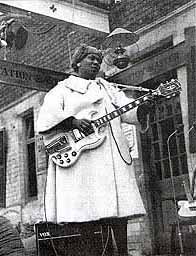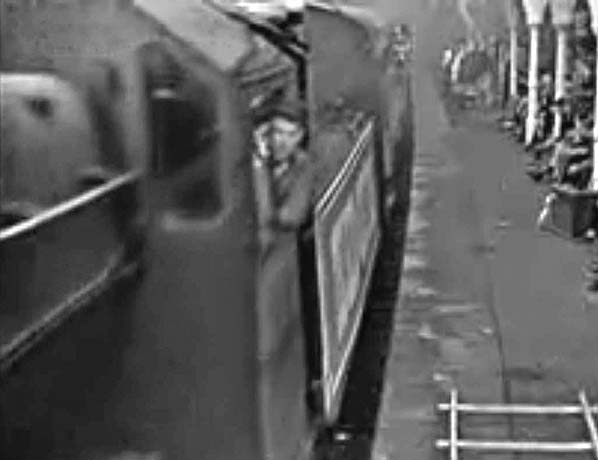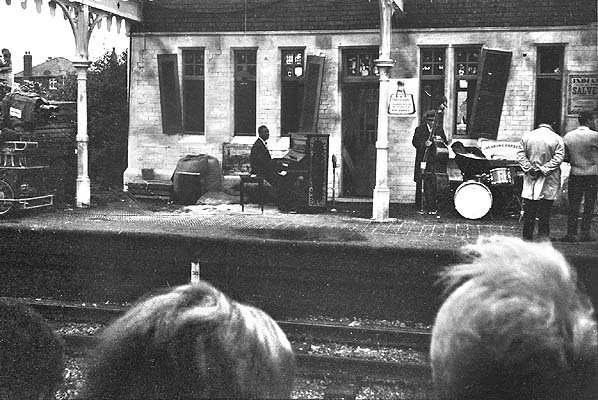Notes: The station was opened as Alexandra Park by the Manchester, Sheffield & Lincolnshire Railway (MSLR) on the 1st September 1891. The station was situated on the MSLR’ Fallowfield Loop line, a 7 mile double track route that linked the Midland Railway’s Manchester South District Line from a point just to the south of Chorlton-cum-Hardy to the MSL main line between Manchester and Sheffield at Fairfield. The reason for the line was to give the MLSR access to Manchester Central Station.
| The line opened in two stages the first section opening from Chorlton to Fallowfield in September 1891. The station was located on the eastern side of a road overbridge which carried Alexandra Road South. It had a handsome red brick single storey building which straddled the line at street level. The building connected to two platforms by way of covered steps; each |
 |
platform had a substantial canopy. There was a signalbox at the east end of the station on the north side of the line controlling access to the goods yard which comprised four sidings.
The line followed and indirect route around the southern suburbs of Manchester and had difficulty competing for local commuter traffic. Passengers in the Grorton area found it quicker to use Bell Vue or Gorton & Openshaw rather than Hyde Road and passengers from Levenshulme saved time by using the LNWR station.
In 1897 the MSLR became the Great Central Railway (GCR). By this time Alexandra Park was served by a local stopping service that ran between Manchester Central and Guide Bridge. In 1903 there were twenty one weekday trains in each direction and seven on a Sunday. When electric trams arrived in the early 20th century serving all intermediate stations except Alexandra Park they were able to provide a more direct and quicker service into central Manchester which further depleted passenger numbers on the loop line. A steady stream of express services passed through the station. a few of them stopping at Fallowfield which was the most important station on the line.
A steady stream of express services passed through the station. On 1st January 1923 the line became part of the LNER and Alexandra Park was renamed Wilbraham Road on 1st July that year.
While the local passenger service on the Fallowfield loop line was in decline, goods traffic remained healthy with regular goods trains in both directions
 |
By the 1930s the LNER had reduced the local stopping service that served Wilbraham Road to seven trains in each direction on a weekday with no services at all on Sundays. The line itself continued to be very busy with express services which included the Liverpool Central to Harwich Parkston Quay Boat Train. Wilbraham Road and the Fallowfield Loop Line |
became part of the nationalised British Railways network in 1948. In 1954 consideration was given to electrifying the line. At this time the former MSL Main line (The Woodhead Route) between Manchester and Sheffield had been electrified and it seemed sensible to continue the electrification through to Manchester Central. As things turned out only a short section of the line between Fairfield and Reddish, were a new Motive Power Depot was opened, was electrified and the wires never came close to Wilbraham Road.
| By 1958 local stopping services which still ran between Manchester Central and Guide Bridge were down to three or four on week days only. In 1922 there were seven daily trains with a further train that stopped only at Fallowfield and four non stop trains between Manchester Central and Guide Bridge, the Sunday service consisted on two non stop trains. By |
 |
1950 this service had been reduced to three daily trains (two on Saturday), three non stop trains and two non stop trains on Sunday. On the 7th July 1958 the service was withdrawn and Wilbraham Road Station closed to passenger services but remained open for goods traffic until 4th August 1958. Regular passenger express services continued to use the line through Wilbraham Road until the closure of Manchester Central in1969. By this date there was just one DMU a day from Liverpool to Guide Bridge and back. After that date it was only goods services passed through.. Reddish Depot closed in 1983 and the last goods services used the line in October 1988.
 |
After closure to passengers the station remained intact for some years and on 7th May 1964 Wilbraham Road took on a new role for one day when Granada TV's Blues & Gospel Train came to the station. The setting was a disused railway station which was 'dressed up' as a deep south railroad complete with sacks, cargo, crates, wanted posters and even a few chickens and a couple of goats and a sign claiming 'Chorltonville'. Muddy Waters was the first artist to appear |
besieged by an eager youthful Mancunian mob of 200 alighting from the incoming train from Manchester Central.
| The programme also included Cousin Joe Pheasant performing his famous 'Fried Chicken Blues' to the delight of the crowd. As is often the way 'up North', this lead to a quite spectacular rainstorm. Next on stage was Sister Rosetta Tharpe brought in by horse and carriage. Her performance of 'Didn't It Rain' (an appropriate last minute switch) included an ear splitting guitar solo.
Other acts included Otis Spann, Willie Smith, Rev. Gary Davis and Ransome Knowling finishing with Sonny Terry & Brownie McGhee with some hard folk style blues for the eager audience. The locomotive was an Ivatt Class 2MT 2-6-0 fitted with a cowcatcher and what looked like a lamp on top of the smokebox to resemble an American steam loco. Click here to see part of the Granada film of the Blues & Gospel. |
 Sister Rosetta Tharpe at
Sister Rosetta Tharpe at
Wilbraham Road |
In 2001 the route of the Fallowfield Loop line was converted into a cycleway.
Further reading: The Fallowfield Line, EM Johnson 2000 Foxline Publishing .ISBN187011969X
Other web sites: Closed South Manchester Railways, The Hyde & Peak Railtour & Levenshulme then and now. Tickets from Michael Stewart except Blues & Gospel train ticket from Pete Goldsmith
Click here to see other stations on the Fallowfield Loop Line:
Chorlton-cum-Hardy, Fallowfield, Levenshulme South, Hyde Road and Fairfield. See also Debdale Park and Reddish Motive Power Depot |

old1.jpg)




road3.jpg)






old_thumb1.jpg)





road_thumb4.jpg)
road_thumb6.jpg)
road_thumb7.jpg)
road_thumb8.jpg)
road_thumb10.jpg)
road_thumb9.jpg)

 Home Page
Home Page